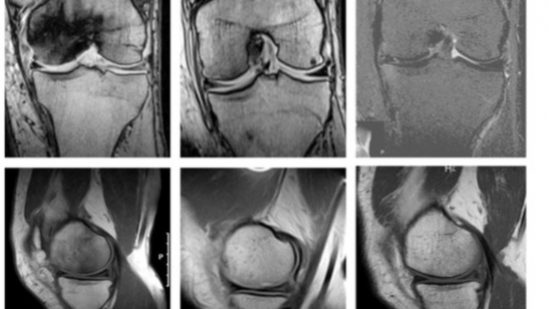Erfolgreiche Behandlung von Knochenmarködemsyndrom (KMÖS), aseptischen Knochennekrosen und Morbus Ahlbäck mit Hyperbarer Sauerstofftherapie.
Der Morbus Ahlbäck zählt zu den aseptischen (nicht durch eine Infektion verursachten) Osteonekrosen. Er findet sich meist an der inneren (medialen) Kondyle (Knochenrolle) des kniegelenkbildenden Anteils des Oberschenkelknochens.
Die Arbeitsgruppe Gerardo Bosco, MD, Giuliano Vezzani, MD, Garrett Enten, BS, Daniele Manelli, MD, Nisha Rao, MD, Enrico M. Camporesi, MD. fand 2018 in Ihrer neuesten Studie:
Abstract:
Background: Osteonecrosis of the knee (ONK) is a form of aseptic necrosis resulting from ischemia to subchondral bone tissue. Typically, treatment is invasive. Hyperbaric oxygen therapy (HBOT) may provide a noninvasive alternative by improving oxygenation and reperfusion of ischemic areas. This study evaluates the efficacy of HBOT in a series of ONK patients
Methods: This retrospective study evaluates 37 ONK patients (29 male, 8 female; mean age ± 1 standard deviation: 54 ± 14); 83.7% of patients presented with Aglietti stage I-II; 16.3% presented with Aglietti stage III. Patients were treated with HBOT once a day, 5 days a week, at 2.5 ATA with 100% inspired oxygen by mask for an average of 67.9 ± 15 sessions. Magnetic resonance imaging was performed before HBOT, within 1 year after completion of HBOT, and in 14 patients, 7 years after treatment. Oxford Knee Scores (OKSs) were recorded before HBOT and at the end of each HBOT treatment cycle.
Results: After the 30 sessions of HBOT, 86% of patients experienced improvement in their OKS, 11% worsened, and 3% did not change. All patients improved in OKS after 50 sessions. Magnetic resonance imaging evaluation 1 year after HBOT completion showed that edema at the femoral condyle had resolved in all but 1 patient
Conclusions: HBOT is beneficial for treating ONK. Patients experienced improvements in pain and mobility as demonstrated by improvement in OKS. Radiographic improvements were also seen upon post-treatment follow-up. Aglietti staging for the entire sample saw an aggregate decrease (P < .01) from 1.7 ± 0.7 to 0.3 ± 0.6
Based on this study’s findings, HBOT should be further investigated for its therapeutic effects in ONK. A majority of patients (95.4%) showed dramatic improvement with the first cycle of HBOT with all patients showing improvement after the second cycle.





